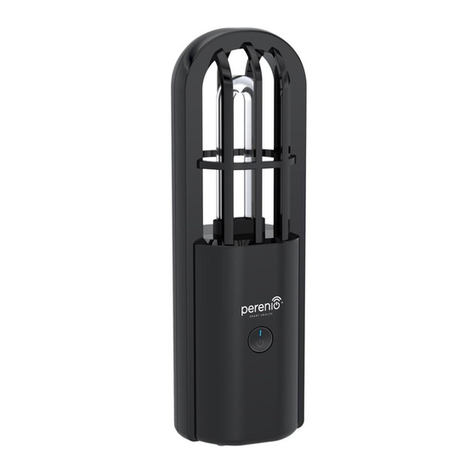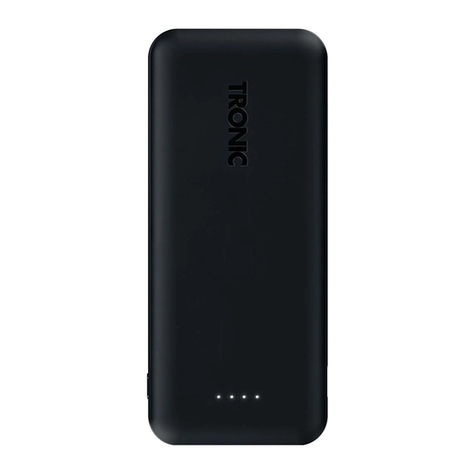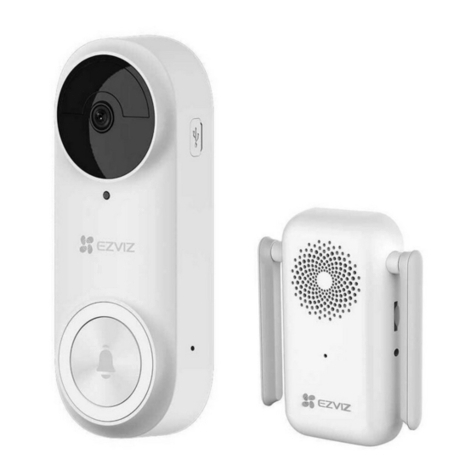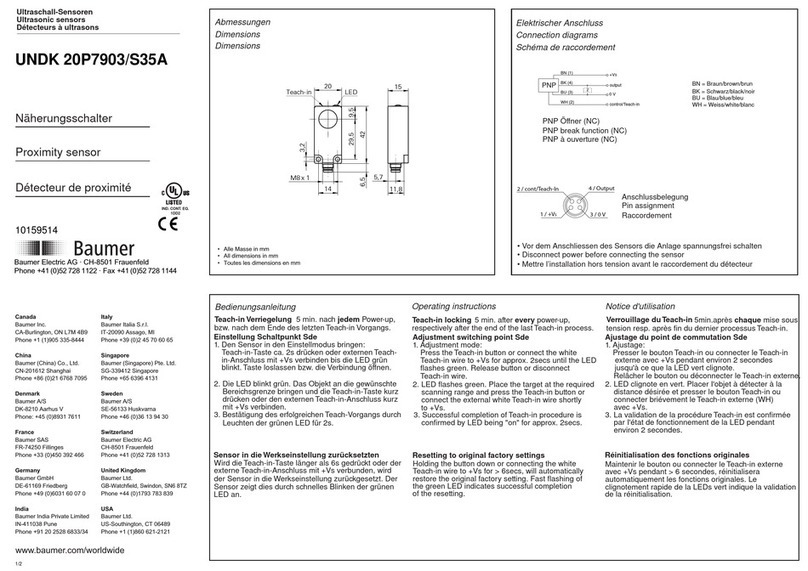AERASGARD RLQ-W Repair manual

AERASGARD® RLQ- W
AERASGARD® RLQ- SD
D G F r
D
Bedienungs- und Montageanleitung
Raum-Luftqualitätsfühler (VOC) bzw. Messumformer,
selbstkalibrierend, mit Mehrbereichsumschaltung
und aktivem ⁄ schaltendem Ausgang
G
Operating Instructions, Mounting & Installation
Room air quality sensor (VOC) and measuring transducer,
self-calibrating, with multi-range switching
and active ⁄ switching output
F
Notice d’instruction
Sonde d'ambiance de qualité de l'air (COV) resp. convertisseur
de mesure, auto-calibrant, avec commutation multi-gamme
et sortie active ⁄ tout ou rien
r
Руководство по монтажу и обслуживанию
Датчик ⁄измерительный преобразователь качества воздуха
(VOC) для помещений, самокалибрующийся,
с переключением между несколькими диапазонами
и активным⁄ релейным выходом
RLQ - W - A
RLQ - W
RLQ - SD
RLQ - W VA
CA RT O NS
ET EMBALLAGE
PAPIER À TRIER
6000-3760-0000-1XXNT 37600-2022-n V108 02 ⁄ 2022
MADE IN GERMANY
Sie haben ein deutsches Qualitätsprodukt erworben.
You have bought a German quality product.
Vous avez fait l’acquisition d’un produit allemand de qualité.
Вы приобрели качественный продукт, изготовленный в Германии.

AERASGARD® RLQ- W
AERASGARD® RLQ- SD
D G F r
Maßzeichnung
Gehäuse Baldur1
Dimensional drawing
Housing Baldur 1
Plan coté
boîtier Baldur1
Габаритный чертеж
Корпус Baldur1
TK: ø60
85
85
27.2
Maßzeichnung
Gehäuse Edelstahl
Dimensional drawing
Housing stainless steel
Plan coté
boîtier acier inox
Габаритный чертеж
Корпус высококачественной стали
ø60
~100
~97
~100 ~97
~25

DAERASGARD®RLQ - W ⁄ RLQ - SD
Rev. 2022 - V37
Wartungsfreier Raumfühler
AERASGARD
®
RLQ - SD
mit aktivem Ausgang, automatischer Kalibrierung, im formschönen Kunststoffgehäuse mit
Schnappdeckel, zur Ermittlung der Luftqualität bzw. Luftgüte (0…100 % VOC). Der Messumformer wandelt die Messgrößen in ein Normsignal von 0 -10 V.
Wartungsfreier Raumfühler
AERASGARD
®
RLQ - W
mit aktivem/schaltendem Ausgang, automatischer Kalibrierung, im formschönen Kunststoffge-
häuse mit Schnappdeckel, optional mit Ampelanzeige (fünf farbige LEDs), zur Ermittlung der Luftqualität bzw. Luftgüte (0…100 % VOC). Der Mess-
umformer wandelt die Messgrößen in ein Normsignal von 0-10 V oder 4...20 mA (umschaltbar).
Der Fühler findet Einsatz in Büros, Hotels, Tagungsräumen, Wohnungen, Geschäften etc. und dient zur Bewertung des Raumklimas. Dies ermöglicht
eine energiesparende, bedarfsgerechte Raumbelüftung und somit eine Senkung der Betriebskosten und Steigerung des Wohlbefindens.
Die Luftgüte wird mittels
VOC-Sensor
(Mischgassensor für flüchtige organische Substanzen) erfasst. Dieser ermittelt die Belastung der Raumluft
durch verunreinigte Gase wie Zigarettenrauch, Körperausdünstungen, Atemluft, Lösungsmitteldämpfe, Emissionen etc. Bezüglich der zu erwartenden
Luftkontamination ist eine geringe, mittlere oder hohe VOC-Empfindlichkeit einstellbar. Alternativ kann die Beurteilung der Raumlauft auch in IAQ-
Einstufungen (von excellent bis ungesund) nach Richtlinien des Bundesumweltamtes erfolgen.
TECHNISCHE DATEN
Spannungsversorgung: 24 V AC ⁄ DC (± 10 %)
Leistungsaufnahme: < 1,5 W ⁄ 24 V DC typisch;
< 2,9 VA ⁄ 24 V AC typisch
Sensor: VOC-Sensor (Metalloxid) (volatile organic compounds = flüchtige organische Substanzen),
mit manueller Kalibrierung (über Zero-Taster) und
mit automatischer Kalibrierung (permanent aktiv)
Messbereich : 0...100 % Luftgüte; bezogen auf Kalibriergas;
Mehrbereichsumschaltung
(über DIP-Schalter wählbar)
VOC-Sensibilitäten (low/medium/high) oder IAQ-Einstufung (Indoor Air Quality)
Ausgang: (0 V = saubere Luft, 10 V = verschmutzte Luft)
RLQ - SD
0 -10 V (fest eingestellt)
RLQ - W
0 -10 V
oder
4...20 mA, Bürde < 800 Ω (über DIP-Schalter wählbar),
mit Offset-Potentiometer (±10% vom Messbereich)
Relais-Ausgang:
RLQ - SD
ohne Wechsler
RLQ - W
mit potentialfreiem
Wechsler
(24 V / 1 A)
(Schaltpunkt einstellbar von 0...100% des Ausgangssignals)
Messgenauigkeit : typisch ± 20 % EW (bezogen auf das Kalibriergas)
Lebensdauer: > 60 Monate (unter Normalbelastung),
abhängig von Belastungsart und Gaskonzentration
Gasaustausch: Diffusion
Umgebungstemperatur: 0...+50 °C
Einlaufzeit: ca. 1 Stunde
Ansprechzeit: ca. 1 Minute
elektrischer Anschluss: 0,14 -1,5 mm2, über Schraubklemmen
Gehäuse: Kunststoff, Werkstoff ABS,
Farbe Reinweiß (ähnlich RAL 9010),
optional Edelstahl
V2A
(1.4 301)
Abmaße: 85 x 85 x 27 mm (Baldur 1)
100 x 100 x 25 mm (Edelstahl)
Montage: Wandmontage oder auf UP-Dose, Ø 55mm, Unterteil mit 4-Loch, für Befestigung auf senkrecht oder
waagerecht installierten UP-Dosen für Kabeleinführung hinten,
mit Sollbruchstelle für Kabeleinführung oben ⁄ unten bei AP
Schutzklasse: III (nach EN 60 730)
Schutzart:
IP 30
(nach EN 60529)
Normen: CE-Konformität, elektromagnetische Verträglichkeit
nach EN 61 326, EMV-Richtlinie 2014 ⁄ 30 ⁄ EU,
Niederspannungsrichtlinie 2014 ⁄ 35 ⁄ E
U
Optional:
mit Ampelanzeige
(fünf farbige LEDs, siehe Tabelle) zur Anzeige der Luftqualität.
Typ ⁄ WG02 Messbereich
VOC
Ausgang
VOC
Ausstattung
Art.-Nr.
RLQ - SD
(fest eingestellt)
RLQ-SD-U
0...100 %
0 -10 V
–
1501-61C0-1001-500
RLQ - W
(umschaltbar)
RLQ-W
0...100 %
0 -10 V
⁄ 4...20 mA
Wechsler
1501-61C0-7301-500
RLQ-W VA
0...100 %
0 -10 V
⁄ 4...20 mA
Wechsler, Edelstahlgehäuse
1501-61C0-7301-505
RLQ - W - A
(umschaltbar)
mit Ampel
RLQ-W-A
0...100 %
0 -10 V
⁄ 4...20 mA
Wechsler, LEDs
1501-61C0-7331-500
A
= mit „Ampel“ (fünf farbige Leuchtdioden) zur Anzeige der Luftgüte (VOC).
Hinweis: Dieses Gerät darf
nicht
als sicherheitsrelevante Einrichtung verwendet werden!

DMontage und Inbetriebnahme
Rev. 2022 - V37
ACHTUNG !
Der Gasaustausch im Sensorelement erfolgt durch Diffusion. Je nach Konzen-
trationsänderung und Strömungsgeschwindigkeit der Luft in Sensorumgebung
kann die Reaktion des Gerätes auf die Konzentrationsänderung verzögert
auftreten. Die Einbaulage des Gerätes ist zwingend so zu wählen, dass der
Sensor vom Luftstrom umspült wird. Anderenfalls kann der Gasaustausch
wesentlich verlangsamt oder verhindert werden.
Allgemeine Information zur Luftqualität
Es existiert keine weltweit einheitliche Norm, auf die sich ein
VOC-Sensor
(Volatile Organic Compounds = flüchtige, organische Substanzen) beziehen
könnte. Da in der zu überwachenden Luft eine Vielzahl von Stoffen vorkommt,
auf welche der Sensor reagiert und sich Gasgemische einstellen, wirkt dieser
Sensor nicht selektiv, sondern spiegelt die allgemeine Luftqualität wieder.
Auch die Aussage, was ist „schlechte Luft“ oder was ist „gute Luft“ kann nicht
prinzipiell getroffen werden, denn dies ist eine rein subjektive Empfindung.
Inbetriebnahme
Nach dem Einschalten des Gerätes erfolgen ein Selbsttest und die Temperierung
.
Dieser Vorgang dauert je nach Umgebungsbedingungen 30-50 min..
(
optional
kann jetzt eine
manuelle Kalibrierung
durchgeführt werden). Bei Inbetrieb-
nahme mit
automatischer Kalibrierung
gehen Sie wie folgt vor:
1.
Alle Fenster öffnen oder Lüftungsanlage auf Außenluft einstellen
2.
Das Gerät einschalten und sich vom Gerät entfernen.
Wenn möglich, alle Personen den Raum verlassen
3.
Nach 50 Minuten ist das Gerät einsatzbereit.
Automatische Kalibrierung der VOC-Messung (permanent aktiv)
Für die Selbstkalibierungstechnik des Sensors, ist lediglich ein regelmäßiger
Frischluftaustausch nötig. Das Gerät erkennt diesen Zustand selbstständig
und führt die Kalibrierung automatisch durch. Es reicht aus in regelmäßigen
Abständen die Fenster zu öffnen bzw. die Lüftungsanlage auf Außenluft einzu-
stellen. Es ist darauf zu achten, dass während dieses Vorgangs keine Schad-
stoffe die Umgebungsluft beeinflussen. Gehen Sie wie folgt vor:
1x wöchentlich für 15-20 Minuten alle Fenster komplett öffnen bzw. die
Lüftungsanlage auf Außenluft einstellen. Für diese Zeit muss das Freisetzen
von Gasen, von flüchtigen organischen Substanzen so gut wie möglich
unterbunden werden.
Regelmäßiges Belüften der Räume bzw. Spülen des Kanals mit Frischluft,
erhöht die Messgenauigkeit des Sensors.
Der automatische Kalibrierzyklus wird bei jedem Einschalten des Gerätes neu
gestartet und ein Korrekturwert über die Betriebsdauer ermittelt. Bei
Spannungsunterbrechung kürzer 7 Tage kann der Berechnungsalgorithmus
durch eine manuelle Kalibrierung unterstützt werden, um eine schnellere
Anpassung des Korrekturwertes zu erreichen.
Manuelle Kalibrierung der VOC-Messung
Die manuelle Kalibrierung kann unabhängig von der automatischen Kalibrie-
rung durchgeführt werden. Vor und während des Kalibriervorganges ist für
ausreichend Frischluft zu sorgen und darauf zu achten, dass keine Schadstoffe
die Umgebungsluft beeinflussen. Gehen Sie bei der manuellen Kalibrierung wie
folgt vor:
1.
Vorbereitung: Das Freisetzen von Gasen von flüchtigen organischen
Subs
tanzen so gut wie möglich unterbinden, Fenster öffnen bzw. Lüftungs-
anlage
auf Außenluft einstellen, Gehäusedeckel abnehmen und 15 Minuten
warten.
2.
Den
„ZERO VOC“
Taster gedrückt halten, bis die blinkende Status-LED
nach 5 Sekunden in ein Dauerlicht übergeht. Geräte mit Display zeigen
dabei
„AUTO 0“
an und wechseln den Countdown von 5 auf 60. Der
Kalibriervorgang ist gestartet. Fenster weiter geöffnet halten bzw. die
Lüftungsanlage auf Außenluft eingestellt lassen.
3.
Nach 60 Sekunden ist die Kalibrierung abgeschlossen (Status-LED
erloschen, Countdown abgelaufen) und das Gerät zeigt bzw. übermittelt
die aktuelle VOC-Konzentration.
Schaltpunkteinstellung
Über das Potentiometer SET kann ein Schaltpunkt zwischen 10 % und 95 %
des des Messbereichs gewählt werden. Als Schaltausgang steht ein
potentialfreier Wechslerkontakt zur Verfügung.
Offset
Eine nachträgliche Justage des VOC-Messwertes kann über das Offset-Potentio-
meter erfolgen. Der Nachstellbereich liegt bei ±10% vom Messbereich.
Ampelanzeige
RLQ - W - A
VOC -
Anteil
LED 1
grün
LED 2
grün
LED 3
gelb
LED 4
gelb
LED 5
rot
0 % 25 % ––––
5 % 50 % ––––
10 % 75 % ––––
15
%
100 %
––––
20 % 25 % –––
25 % 50 % –––
30 % 75 % –––
35
%
100 %
–––
40 % 25 % – –
45 % 50 % – –
50 % 75 % – –
55
%
100 %
– –
60 % 25 % –
65 % 50 % –
70 % 75 % –
75
%
100 %
–
80 % 25 %
85 % 50 %
90 % 75 %
95
%
100 %
100 %
Mit Erreichen der oben genannten Werte wird die jeweilige LED aktiv
(mit zunehmender Leuchtkraft von 25 %, 50 %, 75 % und 100 %),
bereits aktive LEDs leuchten weiter.
DIP-Schalter
RLQ - W
VOC - Sensibilität DIP 1 DIP 2
LOW OFF OFF
MEDIUM (default)
O N
OFF
HIGH OFF
O N
IAQ
(Indoor Air Quality)
O N O N
Ausgang DIP 4
Spannung 0 -10 V (default) OFF
Strom 4...20 mA
O N
Ampel (5x LED) DIP 5
deaktiviert OFF
aktiviert
O N
Hinweis:
DIP 3
ist nicht belegt!
DIP-Schalter
RLQ - SD
VOC - Sensibilität DIP 1 DIP 2
LOW OFF OFF
MEDIUM (default)
O N
OFF
HIGH OFF
O N
IAQ
(Indoor Air Quality)
O N O N
Level IAQ
(Indoor Air Quality)
VOC
1ausgezeichnet 0
...
19
%
keine Maßnahmen erforderlich
2gut 20
...
39
%
baldige Belüftung empfohlen
3mäßig 40
...
59
%
Belüftung empfohlen
4schlecht 60
...
79
%
verstärkte Belüftung erforderlich
5ungesund 80
...
100
%
intensive Belüftung notwendig
Tabelle nach TVOC-Richtlinien des Bundesumweltamtes
zur Beurteilung von Innenraumluftkontaminationen
(Bundesgesundheitsbl - Gesundheitsforsch -
Gesundheitsschutz 2007, 50: 990–1005)

DWichtige Hinweise
– Dieses Gerät darf nur in nicht kondensierender Luft ohne Über- oder Unterdruck am Sensorelement eingesetzt werden.
– Der Spannungsausgang ist kurzschlussfest.
– Dass Anlegen einer Überspannung zerstört das Gerät.
– Bei Verunreinigungen empfehlen wir eine werksseitige Reinigung und Neukalibrierung.
– Extrem hohe Konzentrationen von VOCs, aggressive Reinigungsmittel oder silikonhaltige Dämpfe können das Sensorelement zerstören oder
die Lebensdauer stark reduzieren.
– Der Arbeitsbereich des Gerätes umfasst 10...95 % relative Feuchte bzw. 0...+50 °C.
Außerhalb des Arbeitsbereiches kommt es zu Fehlmessungen bzw. zu höheren Abweichungen.
– Falls die Automatik (Automatischer Abgleich der VOC-Messgröße) aktiviert ist,muss eine zyklische Frischluftzufuhr stattfinden,
daansonstenFehlmessungenauftreten können.
– Für eine korrekte Messung der VOC-Konzentration, muss das Gerät permanent bestromt werden.
– Beim Betrieb des Gerätes ausserhalb des Spezifikationsbereiches entfallen alle Garantieansprüche.
Als AGB gelten ausschließlich unsere sowie die gültigen „Allgemeinen Lieferbedingungen für Erzeugnisse und Leistungen der Elektroindustrie“
(ZVEI Bedingungen) zuzüglich der Ergänzungsklausel „Erweiterter Eigentumsvorbehalt“.
Außerdem sind folgende Punkte zu beachten:
– Vor der Installation und Inbetriebnahme ist diese Anleitung zu lesen und die alle darin gemachten Hinweise sind zu beachten!
– Der Anschluss der Geräte darf nur an Sicherheitskleinspannung und im spannungslosen Zustand erfolgen.
Um Schäden und Fehler am Gerät (z.B. durch Spannungsinduktion) zu verhindern, sind abgeschirmte Leitungen zu verwenden,
eine Parallelverlegung zu stromführenden Leitungen zu vermeiden und die EMV- Richtlinien zu beachten.
– Dieses Gerät ist nur für den angegebenen Verwendungszweck zu nutzen, dabei sind die entsprechenden Sicherheitsvorschriften des VDE,
der Länder, ihrer Überwachungsorgane, des TÜV und der örtlichen EVU zu beachten.
Der Käufer hat die Einhaltung der Bau- und Sicherungsbestimmung zu gewährleisten und Gefährdungen aller Art zu vermeiden.
–
Für Mängel und Schäden, die durch unsachgemäße Verwendung dieses Gerätes entstehen, werden keinerlei Gewährleistungen und Haftungen übernommen
.
– Folgeschäden, welche durch Fehler an diesem Gerät entstehen, sind von der Gewährleistung und Haftung ausgeschlossen.
– Montage und Inbetriebnahme der Geräte darf nur durch Fachpersonal erfolgen.
–
Es gelten ausschließlich die technischen Daten und Anschlussbedingungen der zum Gerät gelieferten Montage- und Bedienungsanleitung, Abweichungen zur
Katalogdarstellung sind nicht zusätzlich aufgeführt und im Sinne des technischen Fortschritts und der stetigen Verbesserung unserer Produkte möglich.
– Bei Veränderungen der Geräte durch den Anwender entfallen alle Gewährleistungsansprüche.
– Dieses Gerät darf nicht in der Nähe von Wärmequellen (z.B. Heizkörpern) oder deren Wärmestrom eingesetzt werden, eine direkte Sonneneinstrahlung
oder Wärmeeinstrahlung durch ähnliche Quellen (starke Leuchte, Halogenstrahler) ist unbedingt zu vermeiden.
– Der Betrieb in der Nähe von Geräten, welche nicht den EMV-Richtlinien entsprechen, kann zur Beeinflussung der Funktionsweise führen.
– Dieses Gerät darf nicht für Überwachungszwecke, welche dem Schutz von Personen gegen Gefährdung oder Verletzung dienen und
nicht als Not-Aus-Schalter an Anlagen und Maschinen oder vergleichbare sicherheitsrelevante Aufgaben verwendet werden.
– Die Gehäuse- und Gehäusezubehörmaße können geringe Toleranzen zu den Angaben dieser Anleitung aufweisen.
– Veränderungen dieser Unterlagen sind nicht gestattet.
– Reklamationen werden nur vollständig in Originalverpackung angenommen.
Hinweise zur Inbetriebnahme:
Dieses Gerät wurde unter genormten Bedingungen kalibriert, abgeglichen und geprüft. Bei Betrieb unter abweichenden Bedingungen empfehlen wir Vorort eine
manuelle Justage erstmals bei Inbetriebnahme sowie anschließend in regelmäßigen Abständen vorzunehmen.
Eine Inbetriebnahme ist zwingend durchzuführen und darf nur von Fachpersonal vorgenommen werden!
Vor der Montage und Inbetriebnahme ist diese Anleitung zu lesen und die alle darin gemachten Hinweise sind zu beachten!
Schaltbild
Parallelbetrieb
Schaltbild
Einzelbetrieb
VERSORGUNGSSPANNUNG:
Als Verpolungsschutz der Betriebsspannung ist bei dieser Gerätevariante
eine Einweggleichrichtung bzw. Verpolungschutzdiode integriert. Diese
interne Einweggleichrichtung erlaubt auch den Betrieb mit AC-Versorgungs-
spannung.
Das Ausgangssignal ist mit einem Messgerät abzugreifen. Hierbei wird
das Ausgangssignal gegen das Nullpotenial (O V) der Eingangsspannung
gemessen!
Wird dieses Gerät mit
DC - Versorgungsspannung
betrieben, ist der
Betriebsspannungseingang UB+ für 15...36 V DC- Einspeisung und UB– bzw.
GND als Masseleitung zu verwenden!
Werden mehrere Geräte von einer 24 V
AC - Spannung
versorgt, ist
darauf zu achten, dass alle „positiven“ Betriebsspannungseingänge (+) der
Feldgeräte miteinander verbunden sind, sowie alle „negativen“ Betriebs-
spannungseingänge (–) = Bezugspotential miteinander verbunden sind
(phasengleicher Anschluss der Feldgeräte). Alle Feldgeräteausgänge
müssen auf das gleiche Potential bezogen werden!
Bei Verpolung der Versorgungsspannung an einem der Feldgeräte würde
über dieses ein Kurzschluss der Versorgungsspannung erzeugt. Der somit
über dieses Feldgerät fließende Kurzschlussstrom kann zur Beschädigung
dieses Gerätes führen.
Achten Sie daher auf die korrekte Verdrahtung!
Schaltung Schaltung
Ausgang
0V/GND
Ausgang
0V/GND
Versorgung mit
AC 24V~ 0V
DC 15-36V = GND
AC 24V~ 0V
DC 15-36V = GND
Schaltung
Ausgang
0V/GND
Versorgung mit

GAERASGARD®RLQ - W ⁄ RLQ - SD
Rev. 2022 - V37
Maintenance-free room sensor
AERASGARD
®
RLQ - SD
with active output, automatic calibration, in an elegant plastic housing with snap-on lid, for
determining the air quality (0…100 % VOC). The measuring transducer converts the measured values into a standard signal of 0 -10V or 4...20 mA
(switchable).
Maintenance-free room sensor
AERASGARD
®
RLQ - W
with active/switching output, automatic calibration in an elegant plastic housing with snap-on
lid, optional with traffic light indicator (five coloured LEDs), for determining the air quality (0…100 % VOC). The measuring transducer converts the
measured values into a standard signal of 0 -10 V or 4...20 mA (switchable).
The sensor is used in offices, hotels, convention centres, apartments, shops, etc. for the purpose of evaluating the indoor climate. This enables
energy-saving room ventilation on an as-needed basis, thereby reducing operating costs and improving well-being.
The air quality is detected by a
VOC sensor
(mixed gas sensor for volatile organic substances). This sensor determines the loading of the room air
due to contaminated gases such as cigarette smoke, body perspiration, exhaled breathing air, solvent vapours, emissions, etc. With regard to the
expected air contamination, low, medium or high VOC sensitivity can be selected. As an alternative, use IAQ categories (from excellent to unhealthy)
following the guidelines of the German Federal Environmental Agency to assess the room air.
TECHNICAL DATA
Power supply: 24 V AC ⁄ DC (± 10 %)
Power consumption: < 1.5 W ⁄ 24 V DC typical;
< 2.9 VA ⁄ 24 V AC typical
Sensor: VOC sensor (metal oxide) (VOC = volatile organic compounds),
with manual calibration (via zero button),
with
automatic calibration (permanently active)
Measuring range: 0...100 % air quality; referred to calibrating gas;
multi-range switching
(selectable via DIP switches)
VOC sensitivities (low/medium/high) or IAQ category (Indoor Air Quality)
Output: (0V = clean air, 10 V = polluted air)
RLQ - SD
0 -10 V (fixed)
RLQ - W
0 -10 V
or
4...20 mA, working resistance < 800 Ω (selectable via DIP switches),
with offset potentiometer (± 10% of the measuring range)
Relay output:
RLQ - SD
without changeover contact
RLQ - W
with potential-free
changeover contact
(24 V / 1 A)
(switchpoint can be adjusted from 0...100 % of the output signal)
Measuring accuracy: typically ±20 % of final value (referred to calibrating gas)
Service life: > 60 months (under normal load conditions),
depending on the type of loading and gas concentration
Gas exchange: by diffusion
Ambient temperature: 0...+ 50 °C
Warm-up time: approx. 1 hour
Response time: approx. 1 minute
Electrical connection: 0.14 - 1.5 mm2, via screw terminals
Housing: plastic, material ABS,
colour pure white (similar to RAL 9010),
optional stainless steel
V2A
(1.4 301)
Dimensions: 85 x 85 x 27 mm (Baldur 1)
100 x 100 x 25 mm (stainless steel)
Installation: wall mounting or on in-wall flush box, Ø 55mm, base with 4-hole for mounting on vertically or
horizontally installed in-wall flush boxes for cable entry from the back,
with predetermined breaking point for on-wall cable entry from top ⁄ bottom in case of plain on-wall installation
Protection class: III (according to EN 60730)
Protection type:
IP 30
(according to EN 60 529)
Standards: CE conformity, electromagnetic compatibility
according to EN 61 326, EMC Directive 2014 ⁄ 30 ⁄ EU,
Low Voltage Directive 2014 ⁄ 35 ⁄ EU
Optional:
with traffic light indicator
(five coloured LEDs, see table) for displaying the air quality.
Type ⁄ WG02 Measuring
Range
VOC
Output
VOC
Equipment
Item No.
RLQ - SD
(fixed)
RLQ-SD-U
0...100 %
0 -10 V
–
1501-61C0-1001-500
RLQ - W
(switchable)
RLQ-W
0...100 %
0 -10 V
⁄ 4...20 mA
Changeover contact
1501-61C0-7301-500
RLQ-W VA
0...100 %
0 -10 V
⁄ 4...20 mA
Changeover contact, stainless steel housing
1501-61C0-7301-505
RLQ - W - A
(switchable)
with traffic light
RLQ-W-A
0...100 %
0 -10 V
⁄ 4...20 mA
Changeover contact, LEDs
1501-61C0-7331-500
A
= with “traffic light” (five coloured LEDs) for displaying the air quality (VOC).
Note: This unit
must not
be used as safety-relevant device!

GInstallation and Commissioning
Rev. 2022 - V37
Traffic light indicator
RLQ - W - A
VOC -
content
LED 1
green
LED 2
green
LED 3
yellow
LED 4
yellow
LED 5
red
0 % 25 % ––––
5 % 50 % ––––
10 % 75 % ––––
15
%
100 %
––––
20 % 25 % –––
25 % 50 % –––
30 % 75 % –––
35
%
100 %
–––
40 % 25 % – –
45 % 50 % – –
50 % 75 % – –
55
%
100 %
– –
60 % 25 % –
65 % 50 % –
70 % 75 % –
75
%
100 %
–
80 % 25 %
85 % 50 %
90 % 75 %
95
%
100 %
100 %
Once the aforementioned values have been reached, the respective
LED becomes active (with increasing luminosity of 25%, 50 %, 75 %
and 100 %); LEDs that are already active continue to be illuminated.
DIP switches
RLQ - W
VOC sensitivity DIP 1 DIP 2
LOW OFF OFF
MEDIUM (default)
O N
OFF
HIGH OFF
O N
IAQ
(Indoor Air Quality)
O N O N
Output DIP 4
Voltage 0 -10 V (default) OFF
Current 4...20 mA
O N
Traffic light (5x LEDs) DIP 5
deactivated OFF
activated
O N
Note:
DIP 3
is not assigned!
DIP switches
RLQ - SD
VOC sensitivity DIP 1 DIP 2
LOW OFF OFF
MEDIUM (default)
O N
OFF
HIGH OFF
O N
IAQ
(Indoor Air Quality)
O N O N
Level IAQ
(Indoor Air Quality)
VOC
1excellent 0
...
19
%
no action required
2good 20
...
39
%
prompt airing recommended
3moderate 40
...
59
%
airing recommended
4poor 60
...
79
%
increased airing required
5unhealthy 80
...
100
%
intense airing necessary
Table according to TVOC guidelines of the German Federal
Environmental Agency to assess indoor air contamination
(Bundesgesundheitsbl - Gesundheitsforsch -
Gesundheitsschutz 2007, 50: 990–1005)
ATTENTION !
The gas inter-exchange in the sensor element happens by diffusion. Depending
on the changes to the concentration and the flow velocity of the air surrounding
the sensor, the reaction of the device to the change of concentration may take
place with a delay. It is essential to choose an installation location for the
device in which the air stream flows around the sensor. Otherwise the gas
exchange may be considerably delayed or prevented.
General information on air quality
There is no universally uniform standard, which could be applied to a
VOC
sensor
(Volatile Organic Compounds). The monitored air contains a large
number of substances to which the sensor responds, and gas mixtures are
adjusted. Therefore this sensor does not act selectively, but rather reflects
the overall air quality. In principle, one also cannot state precisely what is
"bad air" or what is "good air" because this is a purely subjective sensation.
Commissioning
After the device is switched on, a self-test and temperature equalisation are
performed. Depending on the ambient conditions, this process takes 30-50
minutes (
as an option,
manual calibration
can now be performed). If commis-
sioning with
automatic calibration
, proceed as follows:
1.
Open all windows or set the air conditioning system to use outdoor air
2.
Switch on the device and move away from the device. If possible,
all persons should leave the room.
3.
The device is ready to use after 50 minutes.
Automatic calibration of the VOC measurement (permanently active)
The regular exchange of fresh air is all that is required for the self-calibration
technology in the sensor. The device detects this condition and performs the
calibration automatically. It is sufficient to open the windows or set the air
conditioning system to use outdoor air at regular intervals. Make sure that no
harmful substances influence the ambient air during this process. Proceed as
follows:
Open all windows fully or set the air conditioning system to use outdoor air
1x weekly for 15-20 minutes. During this time, the release of gases from
volatile organic substances must be prevented as far as possible.
Regular ventilation of the rooms and flushing of the duct with fresh air will
increase the measuring accuracy of the sensor.
Every time the device is switched on, the automatic calibration cycle restarts
and calculates a correction value across the operating period. In case of power
disruptions of less than 7 days, the calculation algorithm may be
supported with a manual calibration to adjust the correction value more quickly.
Manual calibration of the VOC measurement
Manual calibration can be carried out independently of automatic calibration.
Sufficient fresh air must be provided
before and during the calibration proce-
dure. Also make sure that no harmful substances
influence the ambient air.
Proceed as follows to perform manual calibration:
1.
Preparation: Prevent the release of gases from volatile organic
subs
tances as far as possible, open windows and set air conditioning
system
to use outdoor air, remove the housing cover and wait 15 min.
2.
Press and hold the
“ZERO VOC”
button until the flashing LED row
changes to a steady light after 5 seconds. Devices with a display indicate
“AUTO 0”
and change the countdown from 5 to 60. The calibration
process has started. Keep the windows open or
the air conditioning system set to use outdoor air.
3.
After 60 seconds, the calibration is complete (status LED has gone out,
the countdown is complete) and the device indicates or transmits the
current VOC concentration.
Switching point setting
A switching point between 10 % and 95 % of the measuring range can be
selected using the SET potentiometer. A potential-free changeover contact is
available as a switch output.
Offset
The VOC measured value can be adjusted subsequently using the offset
potentiometer. The adjusting range is ± 10 % of the measuring range
.

GGeneral notes
– This device may only be used in non-precipitating air without above-atmospheric or below-atmospheric pressure at the sensor element.
– The voltage output is short-circuit proof.
– Applying overvoltage will destroy the device.
– In case of pollution, we recommend cleaning and recalibration in the factory.
– Extremely high concentrations of VOCs, aggressive cleaning agents or silicone-containing vapours can destroy the sensor element or
reduce its service life drastically.
– The device operating range covers 10...95 % relative humidity respectively 0...+50 °C.
Outside of that range, mismeasurements or increased deviations will occur.
– If the automatic system (automatic balancing of VOC measurand) is activated,a cyclical fresh air supply must be provided,
asotherwiseincorrect measurementscan occur.
– The device must be permanently energized to measure the VOC concentration correctly.
– If this device is operated beyond the specified range, all warranty claims are forfeited.
Our “General Terms and Conditions for Business“ together with the “General Conditions for the Supply of Products and Services of the Electrical and
Electronics Industry“ (ZVEI conditions) including supplementary clause “Extended Retention of Title“ apply as the exclusive terms and conditions.
In addition, the following points are to be observed:
– These instructions must be read before installation and putting in operation and all notes provided therein are to be regarded!
– Devices must only be connected to safety extra-low voltage and under dead-voltage condition. To avoid damages and errors at the device (e.g. by voltage
induction) shielded cables are to be used, laying parallel with current-carrying lines is to be avoided, and EMC directives are to be observed.
–
This device shall only be used for its intended purpose. Respective safety regulations issued by the VDE, the states, their control authorities, the TÜV and
the local energy supply company must be observed. The purchaser has to adhere to the building and safety regulations and has to prevent perils of any kind.
– No warranties or liabilities will be assumed for defects and damages arising from improper use of this device.
– Consequential damages caused by a fault in this device are excluded from warranty or liability.
– These devices must be installed and commissioned by authorised specialists.
–
The technical data and connecting conditions of the mounting and operating instructions delivered together with the device are exclusively valid. Deviations
from the catalogue representation are not explicitly mentioned and are possible in terms of technical progress and continuous improvement of our products.
– In case of any modifications made by the user, all warranty claims are forfeited.
– This device must not be installed close to heat sources (e.g. radiators) or be exposed to their heat flow.
Direct sun irradiation or heat irradiation by similar sources (powerful lamps, halogen spotlights) must absolutely be avoided.
– Operating this device close to other devices that do not comply with EMC directives may influence functionality.
– This device must not be used for monitoring applications, which serve the purpose of protecting persons against hazards or injury,
or as an EMERGENCY STOP switch for systems or machinery, or for any other similar safety-relevant purposes.
– Dimensions of housings or housing accessories may show slight tolerances on the specifications provided in these instructions.
– Modifications of these records are not permitted.
– In case of a complaint, only complete devices returned in original packing will be accepted.
Notes on commissioning:
This device was calibrated, adjusted and tested under standardised conditions. When operating under deviating conditions, we recommend performing an
initial manual adjustment on-site during commissioning and subsequently at regular intervals
.
Commissioning is mandatory and may only be performed by qualified personnel!
These instructions must be read before installation and commissioning and all notes provided therein are to be regarded!
Connecting scheme
Parallel operation
Connecting scheme
Individual operation
Circuitry Circuitry
Output
0V/GND
Output
0V/GND
Power supply
AC 24V~ 0V
DC 15-36V = GND
Circuitry
Output
0V/GND
Power supply
AC 24V~ 0V
DC 15-36V = GND
SUPPLY VOLTAGE :
For operating voltage reverse polarity protection, a one-way rectifier or
reverse polarity protection diode is integrated in this device variant.
This internal one-way rectifier also allows operating 0 - 10V devices on
AC supply voltage.
The output signal is to be tapped by a measuring instrument. Output
voltage is measured her against zero potential (O V) of the input voltage!
When this device is operated on
DC supply voltage
, the operating voltage
input UB+ is to be used for 15...36 V DC supply and UB– or GND for
ground wire!
When several devices are supplied by one 24V
AC voltage supply
, it is to
be ensured that all ”positive“ operating voltage input terminals (+) of the
field devices are connected with each other and all ”negative“ operating
voltage input terminals (–) (= reference potential) are connected together
(in-phase connection of field devices). All outputs of field devices must be
referenced to the same potential!
In case of reversed polarity at one field device, a supply voltage short-
circuit would be caused by that device. The consequential short-circuit
current flowing through this field device may cause damage to it.
Therefore, pay attention to correct wiring!

FAERASGARD®RLQ - W ⁄ RLQ - SD
Rev. 2022 - V37
Sonde d’ambiance
AERASGARD
®
RLQ - SD
sans entretien avec sortie active, calibrage automatique, dans un boîtier plastique élégant avec couvercle
emboîté, pour déterminer la qualité de l’air (0…100% VOC). Le convertisseur de mesure convertit les grandeurs de mesure en un signal normalisé de 0-10 V.
Sonde d’ambiance
AERASGARD
®
RLQ - W
sans entretien avec sortie active/de commutation, calibrage automatique, dans un boîtier plastique
élégant avec couvercle emboîté, en option avec indicateur à LED (cinq LED colorées), pour déterminer la qualité de l’air (0…100 % VOC). Le conver-
tisseur de mesure convertit les grandeurs de mesure en un signal normalisé de 0 -10V ou de 4...20 mA (commutable).
La sonde est utilisée dans les bureaux, hôtels, salles de conférence, appartements, magasins, etc. et sert à évaluer le climat ambiant. Cela permet
d’économiser de l’énergie, d’aérer les pièces en fonction des besoins et donc de réduire les coûts d’exploitation et d’améliorer le bien-être.
La qualité de l’air est déterminée à l’aide d’un
capteur COV
(capteur de gaz mixtes pour substances organiques volatiles). Ce capteur détermine la
pollution de l’air ambiant par des gaz pollués tels que la fumée de cigarette, les odeurs corporelles, l’air respirable, les vapeurs de solvants, les
émissions, etc. En ce qui concerne la contamination prévisible de l’air, une sensibilité aux COV faible, moyenne ou élevée peut être réglée. L’analyse
de l’air ambiant peut également être effectuée selon le classement IAQ (de très bonne à très mauvaise) selon les directives du Ministère fédéral de
l’Environnement.
CARACTÉRISTIQUES TECHNIQUES
Alimentation en tension : 24 V ca / cc (± 10 %)
Puissance absorbée : < 1,5W ⁄ 24 V cc typique;
< 2,9 VA ⁄ 24 V ca typique
Capteur : capteur COV (oxyde métallique) (volatile organic compounds = composés organiques volatils),
avec étalonnage manuel (via touche zéro),
avec
étalonnage automatique (actif en permanence)
Plage de mesure : 0...100 % qualité d’air, se référant au gaz de calibrage,
commutation multi-gamme
(sélectionnable via interrupteur DIP)
sensibilités COV (basse/moyenne/élevée) ou classement IAQ (Indoor Air Quality - Qualité de l’air intérieur)
Sortie : (0V = air propre, 10 V = air pollué)
RLQ - SD
0 -10 V
(réglage fixe)
RLQ - W
0 -10 V
ou
4...20 mA, charge < 800 Ω (sélectionnable via interrupteur DIP),
avec potentiomètre offset (± 10% de la plage de mesure)
Sortie relais :
RLQ - SD
sans inverseur
RLQ - W
avec
inverseur
sans potentiel (24 V / 1 A)
(point de commutation réglable de 0...100 % du signal de sortie)
Précision de mesure: typique ± 20 % Vf (se référant au gaz de calibrage)
Durée de vie : > 60 mois (sous sollicitation normale),
dépend du type de sollicitation et de la concentration de gaz
Échange de gaz: diffusion
Température ambiante : 0...+50 °C
Temps de démarrage : env. 1 heure
Temps de réponse : env. 1 minute
Raccordement électrique :
0,14 - 1,5 mm2, par bornes à vis
Boîtier : matière plastique, matériau ABS,
couleur blanc pur (similaire à RAL9010),
acier inox en option
V2A
(1.4 301)
Dimensions : 85 x 85 x 27 mm (Baldur 1)
100 x 100 x 25 mm (acier inox)
Montage :
montage mural ou sur boîte d’encastrement, Ø 55 mm, partie inférieure
avec 4 trous,
pour fixation sur boîtes d’encastrement montées verticalement
ou horizontalement pour passage
de câble par l’arrière, avec point de rupture pour passage de câble par le haut ⁄ bas pour montage en saillie
Classe de protection : III (selon EN 60 730)
Type de protection :
IP 30
(selon EN 60 529)
Normes : conformité CE, compatibilité électromagnétique
selon EN 61 326,
Directive «
CEM
» 2014 ⁄ 30 ⁄ EU,
Directive basse tension 2014 ⁄ 35 ⁄ EU
En option :
avec indicateur à LED
(cinq LED colorées, voir tableau) pour l'affichage de la qualité de l'air.
Type ⁄ WG02 plage de mesure
COV
sortie
COV
équipement référence
RLQ - SD
(réglage fixe)
RLQ-SD-U
0...100 %
0 -10 V –1501-61C0-1001-500
RLQ - W
(commutable)
RLQ-W
0...100 %
0 -10 V ⁄ 4...20 mA inverseur 1501-61C0-7301-500
RLQ-W VA
0...100 %
0 -10 V ⁄ 4...20 mA inverseur, boîtier acier inox 1501-61C0-7301-505
RLQ - W - A
(commutable)
avec « feu tricolore »
RLQ-W-A
0...100 %
0 -10 V ⁄ 4...20 mA inverseur, LED 1501-61C0-7331-500
A
=
avec « feu tricolore » (cinq diodes électroluminescentes de couleurs différentes) pour afficher la qualité de l’air (COV).
Remarque : Cet appareil
ne doit pas
être utilisé comme un dispositif de sécurité!

FMontage et mise en service
Rev. 2022 - V37
Affichage « feu tricolore »
RLQ - W - A
Part de
COV
LED 1
vert
LED 2
vert
LED 3
jaune
LED 4
jaune
LED 5
rouge
0 % 25 % ––––
5 % 50 % ––––
10 % 75 % ––––
15
%
100 %
––––
20 % 25 % –––
25 % 50 % –––
30 % 75 % –––
35
%
100 %
–––
40 % 25 % – –
45 % 50 % – –
50 % 75 % – –
55
%
100 %
– –
60 % 25 % –
65 % 50 % –
70 % 75 % –
75
%
100 %
–
80 % 25 %
85 % 50 %
90 % 75 %
95
%
100 %
100 %
Lorsque les valeurs indiquées ci-dessus sont atteintes, la LED
correspondante s'allume (avec une intensité lumineuse croissante de
25 %, 50 %, 75 % et 100 %), les LED déjà actives restent allumées.
Niveau IAQ
(Indoor Air Quality - Qualité de l’air intérieur)
COV
1Très bonne 0
...
19
%
aucune mesure nécessaire
2bonne 20
...
39
%
aération recommandée prochainement
3moyenne 40
...
59
%
aération recommandée
4mauvaise 60
...
79
%
aération prolongée nécessaire
5Très mauvaise 80
...
100
%
aération intensive indispensable
Tableau conforme aux directives COVT du Ministère fédéral de
l’Environnement pour l’évaluation du niveau de contamination de
l’air intérieur
Journal du Ministère fédéral de la santé - Recherche en santé -
Protection de la santé 2007, 50: 990–1005)
Interrupteur DIP
RLQ - W
Sensibilité COV DIP 1 DIP 2
LOW OFF OFF
MEDIUM (default)
O N
OFF
HIGH OFF
O N
IAQ
(Indoor Air Quality)
O N O N
Sortie DIP 4
Tension 0 -10 V (default) OFF
Courant 4...20 mA
O N
« feu tricolore » (5 x LED) DIP 5
désactivé OFF
activé
O N
Remarque:
DIP 3
ne sont pas affecté !
Interrupteur DIP
RLQ - SD
Sensibilité COV DIP 1 DIP 2
LOW OFF OFF
MEDIUM (default)
O N
OFF
HIGH OFF
O N
IAQ
(Indoor Air Quality)
O N O N
ATTENTION !
L'échange de gazdans l'élément capteur s'effectue par diffusion. En fonction de la
variation de la concentration et de la vitesse d'écoulement de l'air dans l'environ-
nement du capteur, la réaction de l'appareil à la variation de la concentration peut
être retardée. Il est capital de choisir la position de montage de l'appareil de
façon à ce que le capteur soit immergé dans le débit d'air. Si ce n'est pas le cas,
il est possible que l'échange de gaz soit considérablementralenti ou empêché.
Informations générales sur la qualité de l'air
Il n'existe pas de norme uniforme mondiale pouvant faire référence à un
capteur COV
(Volatile Organic Compounds = composés organiques volatils).
Étant donné que dans l'air à surveiller, de nombreuses substances sont
présentes, auxquelles le capteur réagit et que des mélanges gazeux sont
générés, le capteur n'agit pas de manière sélective, mais reflète la qualité de l'air
générale. Par ailleurs, il n'est pas possible d'affirmer dans l'absolu ce qu'est un
«air de mauvaise qualité» ou un «air de bonne qualité», car cela relève d'une
perception purement objective.
Mise en service
Après la mise en marche de l’appareil, celui-ci effectue un autocontrôle et l’équili-
brage de température. Selon les conditions ambiantes, cette procédure dure30 à
50min (un
étalonnage manuel
peut alors être réalisé
en option
). Pour la mise en
service avec
étalonnage automatique
, procéder comme suit:
1.
Ouvrir toutes les fenêtres ou régler le système de ventilation sur air
extérieur
2.
Mettre l’appareil en marche et s’en éloigner. Si possible,
faire sortir toutes les personnes de la pièce
3.
L’appareil est opérationnel après 50minutes.
Étalonnage automatique de la mesure de COV (actif en permanence)
Pour la technique d’étalonnage automatique du capteur, seul un renouvellement
régulier en air frais est nécessaire. L’appareil reconnaît cet état de manière auto-
nome et réalise l’étalonnage automatiquement. Il est suffisant d’ouvrir les
fenêtres à intervalles réguliers ou de régler le système de ventilation sur air
extérieur. Il convient de veiller à ce qu’aucune substance nocive n’influence l’air
ambiant pendant cette procédure. Procéder comme suit:
1fois par semaine, ouvrir complètement toutes les fenêtres ou régler le
système de ventilation sur air extérieur pendant 15-20minutes.
Pendant ce temps, éviter autant que possible toute libération de gaz et de
substances organiques volatiles.
Une aération régulière des pièces ou une purge de la gaine avec de l’air frais
augmentent la précision de mesure du capteur.
Le cycle d’étalonnage automatique est redémarré à chaque mise en marche de
l’appareil et une valeur de correction est calculée pour la durée de fonctionnement.
En cas de coupure de tension inférieure à 7jours, l’algorithme de calcul peut être
accompagné par une l’étalonnage manuel, afin que la valeur de correction soit
adaptée plus rapidement.
Étalonnage manuel de la mesure de COV
L’étalonnage manuel peut être effectué indépendamment de l’étalonnage automa-
tique. Assurer une alimentation en air frais suffisante avant et pendant le proces-
sus d’étalonnage et veiller à ce qu’aucune substance nocive n’influence l’air am-
biant. Procéder à l’étalonnage manuel comme suit:
1.
Préparation: Éviter autant que possible toute libération de gaz et de
substances organiques volatiles,
ouvrir les fenêtres ou régler le système de ventilation
sur air extérieur,
retirer le couvercle du boîtier et attendre 15minutes.
2.
Maintenir la touche
«ZERO VOC»
enfoncée jusqu’à ce que les LED d’état
s’allument en continu (après 5secondes). Les appareils avec écran affichent
alors
«AUTO0»
, et le compte à rebours passe de 5 à 60. Le processus
d’étalonnage est lancé. Laisser les fenêtres ouvertes ou le
système de ventilation réglé sur air extérieur.
3.
L’étalonnage est terminé après 60 secondes (LED d’état éteintes, compte à
rebours écoulé), et l’appareil indique la concentration actuelle en COV.
Réglage du point de commutation
Un point de commutation entre 10% et 95% de la plage de mesure peut être
sélectionné via le potentiomètre SET. Un contact inverseur sans potentiel est
disponible en tant que sortie de commutation.
Offset
Un réglage ultérieur de la valeur de mesure du COV peut être effectué via le
potentiomètre offset. La plage de réglage ultérieur est de ± 10 % de la plage
de mesure.

FGénéralités
– Cet appareil ne doit être utilisé que dans un air sans risque de condensation, sans risque de surpression ou dépression sur l’élément sensible.
– La sortie en tension est isolée de la masse.
– L’application d’une surtension causera la destruction de l’appareil.
– En cas d’impuretés, il est conseillé de procéder à un nettoyage à l’usine et de l’étalonner à nouveau.
– Des concentrations extrêmement élevées de COV, de produits de nettoyage agressifs ou de vapeurs contenant du silicone peuvent détruire l'élément
capteur ou réduire considérablement sa durée de vie.
– La plage de service de l’appareil va de 10 à 95 % humidité relative et ⁄ ou de 0 à +50 °C.
Le non-respect de cette plage de service entraînera des mesures erronées et des incertitudes de mesure plus élevées.
– Si le mode Automatique (ajustage automatique des valeurs de mesure de COV) est activé,une alimentation cyclique en air frais doit être assurée afin
d’éviter des mesures erronées.
– Pour une mesure correcte de la concentration en COV, l’appareil doit être continuellement alimenté en courant.
– Nous déclinons toute garantie dans le cas où l’appareil serait utilisé en dehors de la plage des spécifications.
Seules les CGV de la société S+S, les «Conditions générales de livraison du ZVEI pour produits et prestations de l’industrie électronique» ainsi que
la clause complémentaire « Réserve de propriété étendue» s’appliquent à toutes les relations commerciales entre la société S+S et ses clients.
Il convient en outre de respecter les points suivants :
– Avant de procéder à toute installation et à la mise en service, veuillez lire attentivement la présente notice et toutes les consignes qui y sont précisées !
– Les raccordements électriques doivent être exécutés HORS TENSION. Ne branchez l’appareil que sur un réseau de très basse tension de sécurité.
Pour éviter des endommagements ⁄ erreurs sur l’appareil (par ex. dus à une induction de tension parasite), il est conseillé d’utiliser des câbles blindés,
ne pas poser les câbles de sondes en parallèle avec des câbles de puissance, les directives CEM sont à respecter.
– Cet appareil ne doit être utilisé que pour l’usage qui est indiqué en respectant les règles de sécurité correspondantes de la VDE, des Länders,
de leurs organes de surveillance, du TÜV et des entreprises d’approvisionnement en énergie locales.
L’acheteur doit respecter les dispositions relatives à la construction et à la sécurité et doit éviter toutes sortes de risques.
– Nous déclinons toute responsabilité ou garantie pour les défauts et dommages résultant d’une utilisation inappropriée de cet appareil.
– Nous déclinons toute responsabilité ou garantie au titre de tout dommage consécutif provoqué par des erreurs commises sur cet appareil.
– L'installation et la mise en service des appareils doit être effectuée uniquement par du personnel qualifié.
– Seules les données techniques et les conditions de raccordement indiquées sur la notice d’instruction accompagnant l’appareil sont applicables,
des différences par rapport à la présentation dans le catalogue ne sont pas mentionnées explicitement et sont possibles suite au progrès technique et
à l’amélioration continue de nos produits.
– En cas de modifications des appareils par l’utilisateur, tous droits de garantie ne seront pas reconnus.
– Cet appareil ne doit pas être utilisé à proximité des sources de chaleur (par ex. radiateurs) ou de leurs flux de chaleur, il faut impérativement éviter
un ensoleillement direct ou un rayonnement thermique provenant de sources similaires (lampes très puissantes, projecteurs à halogène).
– L’utilisation de l’appareil à proximité d’appareils qui ne sont pas conformes aux directives « CEM » pourra nuire à son mode de fonctionnement.
– Cet appareil ne devra pas être utilisé à des fins de surveillance qui visent à la protection des personnes contre les dangers ou les blessures ni comme
interrupteur d’arrêt d’urgence sur des installations ou des machines ni pour des fonctions relatives à la sécurité comparables.
– Il est possible que les dimensions du boîtier et des accessoires du boîtier divergent légèrement des indications données dans cette notice.
– Il est interdit de modifier la présente documentation.
– En cas de réclamation, les appareils ne sont repris que dans leur emballage d’origine et si tous les éléments de l’appareil sont complets.
Consignes de mise en service:
Cet appareil a été étalonné, ajusté et testé dans des conditions normalisées. En cas de fonctionnement dans des conditions différentes, nous recommandons
un premier réglage manuel sur site lors de la mise en service et à intervalles réguliers par la suite.
La mise en service ne doit être effectuée que par du personnel qualifié!
Avant de procéder à l'installation et à la mise en service, veuillez lire attentivement la présente notice et toutes les consignes qui y sont précisées !
Schéma de raccordement
en parallèle
Schéma de raccordement
individuel
TENSION D’ALIMENTATION :
Cette variante d’appareil est dotée d’une protection contre l’inversion de
polarité, c’.-à.-d. elle comprend un redressement demi-onde (diode de
redressement). Grâce à cette diode de redressement intégrée, les appareils
0 -10V peuvent également être alimentés en courant alternatif.
Le signal de sortie doit être prélevé avec un appareil de mesure. Ce faisant,
la tension de sortie est mesurée par rapport au potentiel zéro (O V) de la
tension d’entrée !
Si cet appareil est
alimenté en courant continu
, il faut utiliser l’entrée
de tension de service UB+ pour l’alimentation en 15…36V cc et UB- ou
GND comme câble de masse !
Si plusieurs appareils sont
alimentés en 24 V ca
, il faut veiller à ce que
toutes les entrées de tension « positives » (+) des appareils de terrain
soient reliées entre elles de même que toutes les entrées de tension
« négatives » (–) = potentiel de référence soient reliées entre elles (les
appareils de terrain doivent être branchés en phase). Toutes les sorties
d’appareil de terrain doivent se référer au même potentiel !
Une inversion de la polarisation de la tension d’alimentation sur un des
appareils de terrain provoquerait un court-circuit. Le courant de court-
circuit passant par cet appareil de terrain peut endommager cet appareil.
Veillez donc au raccordement correct des fils !
Circuitry Circuitry
Output
0V/GND
Output
0V/GND
Power supply
AC 24V~ 0V
DC 15-36V = GND
Circuitry
Output
0V/GND
Power supply
AC 24V~ 0V
DC 15-36V = GND

rAERASGARD®RLQ - W ⁄ RLQ - SD
Rev. 2022 - V37
Не нуждающийся в техническом обслуживании датчик для помещений
AERASGARD
®
RLQ - SD
с активным выходом, автоматической калибровкой в
элегантном пластиковом корпусе с защелкивающейся крышкой. Служит для измерения качества и чистоты воздуха (0…100 % VOC). Измерительный
преобразователь преобразует измеряемые величины в нормированный сигнал 0–10В.
Не нуждающийся в техническом обслуживании датчик для помещений
AERASGARD
®
RLQ - W
с активным/релейным выходом, автоматической
калибровкой в элегантном пластиковом корпусе с защелкивающейся крышкой, опционально со светофорной индикацией (пять цветных светодиодов).
Служит для измерения качества и чистоты воздуха (0…100 % VOC). Измерительный преобразователь
преобразует измеряемые величины в
нормированный сигнал 0–10В или 4...20мА (можно переключить).
Датчик используется в офисах, отелях, конференц-залах, жилых и торговых помещениях и т.д.,
служит для оценки параметров микроклимата и
позволяет снизить эксплуатационные расходы и улучшить
самочувствие благодаря энергосберегающей, управляемой вентиляции.
Чистота воздуха измеряется с помощью
анализатора качества воздуха
(анализатор для летучих органических веществ). Он определяет степень
насыщенности воздуха в помещении загрязненными газами, такими как сигаретный дым, выделения человеческого организма, выдыхаемый
воздух, пары растворителей, эмиссия и т.д. Для измерения степени загрязненности воздуха можно настроить низкую, среднюю или высокую
чувствительность VOC. Альтернативно качество воздуха в помещении можно оценить по градации IAQ (от превосходно до вредно) согласно
директивам Федерального ведомства по охране окружающей среды.
ТЕХНИЧЕСКИЕ ДАННЫЕ
Напряжение питания: 24 Bперем. ⁄ пост. тока (±10%)
Потребляемая мощность: < 1,5Вт ⁄ 24В пост. тока обычно;
< 2,9В·А ⁄ 24В перем. тока обычно
Чувствительный элемент:
чувствительный элемент VOC (металлооксидный) (volatile organic compounds = летучие органические вещества),
с ручной калибровкой (с помощью кнопки «Zero»),
с автоматической калибровкой (непрерывно)
Диапазон измерения: 0...100 % (загрязненность смешанным газом— относительно калибровочного газа),
переключение диапазонов измерения
(при помощи DIP-переключателя)
чувствительность VOC (low/medium/high) или градация IAQ (Indoor Air Quality)
Выходной сигнал: (0В = чистый воздух, 10В = загрязненный воздух)
RLQ - SD
0–10В (фиксированная настройка)
RLQ - W
0–10В
или
4...20мА, нагрузка < 800Ом (при помощи DIP-переключателя),
с потенциометром смещения (±10
% от диапазона измерения)
Релейный выход:
RLQ - SD
без переключающего контакта
RLQ - W
с беспотенциальным
переключающим контактом
(24 В / 1 A),
(порог срабатывания, настраиваемый в пределах от
0...100 % от выходного сигнала)
Погрешность измерения:
обычно ±20% верхнего предельного значения (относительно калибровочного газа)
Долговечность: > 60 месяцев (при нормальной нагрузке),
зависит от характера нагрузки и концентрации газа
Газообмен: диффузия
Окружающая температура: 0...+50 °C
Время выхода
на рабочий режим: прибл. 1 час
Время срабатывания: прибл. 1 минута
Эл. подключение: 0,14–1,5мм², по винтовым зажимам
Корпус: пластик, акрилонитрил-бутадиенстирол (ABS),
цвет– чистый белый (аналогичен RAL9010),
опционально– высококач. сталь
V2A
(1.4 301)
Размеры: 85 x 85 x 27 мм (Baldur 1)
100 x 100 x 25 мм (высококач. сталь)
Монтаж ⁄ подключение: настенный или на монтажную коробку Ø 55 мм, низ с четырьмя отверстиями, для закрепления на вертикально
или горизонтально установленных коробках для подвода кабеля сзади,
с шаблоном отверстия под открытый ввод кабеля сверху или снизу
Класс защиты: III (согласно EN 60730)
Степень защиты:
IP 30
(согласно EN 60 529)
Нормы: соответствие CE-нормам, электромагнитная совместимость согласно
EN 61326, директива 2014 ⁄ 30 ⁄ EU «Электромагнитная
совместимость»,
директива 2014 ⁄ 35 ⁄ EU «Низковольтное оборудование»
Опционально:
со светофорной индикацией
(пять цветных светодиодов, см. таблицу) для индикации качества воздуха.
Тип ⁄ WG02 Диапазон
измерения VOC
Выход
VOC
Комплектация Арт. №.
RLQ - SD
(фиксированная настройка)
RLQ-SD-U
0...100 %
0–10В –
1501-61C0-1001-500
RLQ - W
(переключаемый)
RLQ-W
0...100 %
0–10В / 4 ...20мA переключатель 1501-61C0-7301-500
RLQ-W VA
0...100 %
0–10В / 4 ...20мA переключатель, корпус из высок. стали 1501-61C0-7301-505
RLQ - W - A
(переключаемый)
со светофором
RLQ-W-A
0...100 %
0 -10 V
⁄ 4...20 mA
переключатель
, LEDs
1501-61C0-7331-500
A
= со «светофором» (5 цветных светодиодов) для индикации качества воздуха (VOC).
Примечание:
Недопустимо
использование данного устройства в качестве элемента системы безопасности!

rМонтаж и ввод в эксплуатацию
Rev. 2022 - V37
Светофорная индикация
RLQ - W - A
Содержание
VOC
LED 1
зеленый
LED 2
зеленый
LED 3
желтый
LED 4
желтый
LED 5
красный
0 % 25 % ––––
5 % 50 % ––––
10 % 75 % ––––
15
%
100 %
––––
20 % 25 % –––
25 % 50 % –––
30 % 75 % –––
35
%
100 %
–––
40 % 25 % – –
45 % 50 % – –
50 % 75 % – –
55
%
100 %
– –
60 % 25 % –
65 % 50 % –
70 % 75 % –
75
%
100 %
–
80 % 25 %
85 % 50 %
90 % 75 %
95
%
100 %
100 %
После достижения вышеуказанных значений загорается
соответствующий светодиод (с возрастающей яркостью свечения 25%,
50%, 75% и 100%), светящиеся светодиоды продолжают гореть.
Градация IAQ
(Indoor Air Quality)
VOC
1превосходно 0
...
19
%
все в порядке
2хорошо 20
...
39
%
рекомендуется выполнить вентиляцию в ближайшее время
3умеренно 40
...
59
%
рекомендуется выполнить вентиляцию
4плохо 60
...
79
%
нужна усиленная вентиляция
5вредно 80
...
100
%
нужна интенсивная вентиляция
Таблица согласно директивам по общим летучим органическим
соединениям (англ. TVOC) Федерального ведомства по охране
окружающей среды для определения степени загрязненности
воздуха в помещении (Bundesgesundheitsbl - Gesundheitsforsch -
Gesundheitsschutz 2007, 50: 990–1005)
DIP-переключатели
RLQ - W
Чувствительность VOC DIP 1 DIP 2
LOW OFF OFF
MEDIUM (default)
O N
OFF
HIGH OFF
O N
IAQ
(Indoor Air Quality)
O N O N
Выход DIP 4
потенциальный 0–10В (default) OFF
токовый 4...20мA
O N
Светофор (5x LED) DIP 5
включена OFF
выключена
O N
Примечание:
DIP 3
не задействованы!
DIP-переключатели
RLQ - SD
Чувствительность VOC DIP 1 DIP 2
LOW OFF OFF
MEDIUM (default)
O N
OFF
HIGH OFF
O N
IAQ
(Indoor Air Quality)
O N O N
ВНИМАНИЕ !
Газообмен в чувствительном элементе осуществляется благодаря диффузии. В
зависимости от изменения концентрации и скорости потока воздуха вблизи
чувствительного элемента реакция прибора на изменение концентрации может
происходить с задержкой. При монтаже прибора его расположение необходимо
выбирать таким образом, чтобы поток воздуха обтекал чувствительный
элемент. В противном случае это может привести к существенному замедлению
газообмена вплоть до его остановки.
Общая информация по качеству воздуха
Не существует единого международного стандарта, на который мог бы
ссылаться
чувствительный элемент VOC
(Volatile Organic Compounds = летучие
органические вещества). Контролируемый воздух содержит множество
веществ, на которые реагирует чувствительный элемент и которые образуют
различные газовые смеси. Поэтому этот чувствительный элемент работает не
избирательно, а определяет общее качество воздуха. При этом понятия
«грязный воздух» или «чистый воздух» являются чисто субъективными.
Ввод в эксплуатацию
После включения устройства начинаются самотестирование и терморегулиро-
вание. Этот процесс длится от 30 до 50минут в зависимости от условий окру-
жающей среды (
дополнительно
в это время можно выполнить
ручную кали-
бровку
). При вводе в эксплуатацию с помощью
автоматической калибровки
выполнить следующие действия:
1.
Открыть все окна либо переключить систему вентиляции на забор
воздуха снаружи.
2.
Включить устройство и отойти от него. По возможности все люди должны
покинуть помещение.
3.
Через 50минут устройство готово к использованию.
Автоматическая калибровка для измерения концентрации VOC (непрерывно)
Для самокалибровки датчика нужен регулярный приток свежего воздуха.
Устройство распознает это состояние самостоятельно и выполняет калибровку
автоматически. Достаточно регулярно открывать окна или переключать систему
вентиляции на забор воздуха снаружи. Следить за тем, чтобы во время кали-
бровки никакие загрязняющие вещества не влияли на качество окружающего
воздуха. Выполнить следующие действия:
Один раз в неделю полностью открыть все окна на 15–20минут или пере-
ключить систему вентиляции на забор воздуха снаружи. В это время сделать
все возможное, чтобы не допустить выделения газов, летучих органических
соединений.
Регулярная вентиляция помещений или продувка каналов свежим воздухом
повышает точность измерения датчика.
После каждого включения устройства цикл автоматической калибровки
запускается заново и определяется величина коррекции относительно времени
работы. Если электропитание отсутствовало меньше 7дней, можно выполнить
ручной калибровки, чтобы быстрее рассчитать величину коррекции.
Ручная калибровка для измерения концентрации VOC
Ручная калибровка может осуществляться независимо от автоматической кали-
бровки. Перед калибровкой и во время ее выполнения обеспечить
достаточный
приток свежего воздуха и следить за тем, чтобы никакие загрязняющие веще-
ства
не влияли на качество окружающего воздуха. При ручной калибровке
выполнить следующие действия:
1.
Подготовка: сделать все возможное, чтобы не допустить выделения газов,
летучих органических соединений
, открыть окна или переключить систему
вентиляции
на забор воздуха снаружи, снять крышку корпуса и подождать
15минут.
2.
Нажать и удерживать кнопку
ZEROVOC
, пока через 5секунд мигающий
светодиод состояния не начнет гореть постоянно. При этом на устройствах
с дисплеем отображается
AUTO 0
и время обратного отсчета меняется с
5 на 60. Запускается калибровка. Окна должны оставаться открытыми или
система вентиляции должна забирать воздух снаружи.
3.
Через 60секунд калибровка окончена (светодиод состояния погас,
обратный отсчет завершен), и устройство должно показать или передать
текущую концентрацию VOC..
Настройка порога переключения
Порог переключения настраивается между 10% и 95% диапазона измерения
с помощью потенциометра SET. В качестве переключающего выхода доступен
беспотенциальный переключающий контакт
Смещение
Дополнительную юстировку измеренного значения VOC можно выполнить с
помощью потенциометра смещения. Диапазон настройки составляет прим.
±10% диапазона измерения..

rУказания к продуктам
– Данный прибор допускается применять только в воздухе без конденсата и вредных веществ, при отсутствии пониженного или повышенного давления
вблизи чувствительного элемента.
– Выход напряжения защищен от короткого замыкания.
– Приложение завышенного напряжения к выходу напряжения выводит прибор из строя.
– В случае загрязнения мы рекомендуем очистку и перекалибровку в заводских условиях.
– Очень высокая концентрация VOC, агрессивные чистящие средства или содержащие силикон пары могут разрушить чувствительный элемент или
значительно сократить его срок службы.
– Рабочий диапазон прибора равен 10 ...95 % относительной влажности или 0 ...+50 °C.
За пределами рабочего диапазона возможны ошибочные измерения и повышенные отклонения.
– Если автоматика (автоматическая настройка измеряемой величины VOC) активирована,
должен обеспечиваться циклический приток свежего воздуха, так как в противном случае возможны ошибочные измерения.
– Для правильного измерения концентрации VOC на устройство должен постоянно подаваться ток.
– При эксплуатации прибора вне рабочего диапазона, указанного в спецификации, гарантийные претензии теряют силу.
В качестве Общих Коммерческих Условий имеют силу исключительно наши Условия, а также действительные «Общие условия поставки
продукции и услуг для электрической промышленности» (ZVEI) включая дополнительную статью «Расширенное сохранение прав собственности».
Помимо этого, следует учитывать следующие положения:
– Перед установкой и вводом в эксплуатацию следует прочитать данное руководство; должны быть учтены все приведенные в нем указания!
– Подключение прибора должно осуществляться исключительно к безопасно малому напряжению и в обесточенном состоянии.
Во избежание повреждений и отказов (например, вследствие наводок) следует использовать экранированную проводку, избегать параллельной
прокладки токоведущих линий и учитывать предписания по электромагнитной совместимости.
– Данный прибор следует применять только по прямому назначению, учитывая при этом соответствующие предписания VDE (союза немецких
электротехников), требования, действующие в Вашей стране, инструкции органов технического надзора и местных органов энергоснабжения.
Надлежит придерживаться требований строительных норм и правил, а также техники безопасности и избегать угроз безопасности любого рода.
– Мы не несем ответственности за ущерб и повреждения, возникающие вследствие неправильного применения наших устройств.
– Ущерб, возникший вследствие неправильной работы прибора, не подлежит устранению по гарантии.
– Монтаж и ввод в эксплуатацию должны осуществляться только специалистами.
– Действительны исключительно технические данные и условия подключения, приведенные в поставляемых с приборами руководствах по монтажу и
эксплуатации. Отклонения от представленных в каталоге характеристик дополнительно не указываются, несмотря на их возможность в силу
технического прогресса и постоянного совершенствования нашей продукции.
– В случае модификации приборов потребителем гарантийные обязательства теряют силу.
– Не разрешается использование прибора в непосредственной близости от источников тепла (например, радиаторов отопления)
или создаваемых ими тепловых потоков; следует в обязательном порядке избегать попадания прямых солнечных лучей или теплового излучения от
аналогичных источников (мощные осветительные приборы, галогенные излучатели).
– Эксплуатация вблизи оборудования, не соответствующего нормам электромагнитной совместимости (EMV), может влиять на работу приборов.
– Недопустимо использование данного прибора в качестве устройства контроля ⁄ наблюдения, служащего для защиты людей от травм и угрозы для
здоровья ⁄ жизни, а также в качестве аварийного выключателя устройств и машин или для аналогичных задач обеспечения безопасности.
– Размеры корпусов и корпусных принадлежностей могут в определённых пределах отличаться от указанных в данном руководстве.
– Изменение документации не допускается.
– В случае рекламаций принимаются исключительно цельные приборы в оригинальной упаковке.
Указания по вводу в эксплуатацию:
Этот прибор был откалиброван, отъюстирован и проверен в стандартных условиях. Во время эксплуатации в других условиях рекомендуется провести
ручную юстировку на месте в первый раз при вводе в эксплуатацию и затем на регулярной основе.
Ввод в эксплуатацию обязателен и выполняется только специалистами!
Перед монтажом и вводом в эксплуатацию прочитать данное руководство; должны быть учтены все приведенные в нем указания!
Схема соединения
Параллельное подключение
Схема соединения
Одиночное подключение
НАПРЯЖЕНИЕ ПИТАНИЯ:
В качестве защиты от неправильного подключения рабочего напряжения в
данный вариант прибора интегрирован однополупериодный выпрямитель
или диод защиты от напряжения обратной полярности. В случае приборов,
рассчитанных на напряжение 0 – 10 В, этот встроенный выпрямитель
допускает также эксплуатацию при питании напряжением переменного тока.
Выходной сигнал следует снимать измерительным прибором. Выходное
напряжение при этом измеряется относительно нулевого потенциала (0 В)
входного напряжения!
Если прибор запитывается напряжением
постоянного тока
, следует исполь-
зовать вход рабочего напряжения UB+ (для питания напряжением 15...36 В)
и UB– ⁄ GND (в качестве корпуса)!
Если для питания нескольких приборов используется напряжение 24В
переменного тока,
необходимо следить за тем, чтобы все положительные
входы рабочего напряжения (+) полевых устройств были соединены друг с
другом. Это относится также ко всем отрицательным входам рабочего
напряжения (–) = опорного потенциала (синфазное подключение полевых
устройств). Все выходы полевых устройств должны относиться к одному
потенциалу!
Подключение питающего напряжения одного из полевых устройств с неверной
полярностью ведёт к короткому замыканию напряжения питания. Ток короткого
замыкания, протекающий через данное устройство, может привести к его
повреждению.
Следите за правильностью проводки!
Circuitry Circuitry
Output
0V/GND
Output
0V/GND
Power supply
AC 24V~ 0V
DC 15-36V = GND
Circuitry
Output
0V/GND
Power supply
AC 24V~ 0V
DC 15-36V = GND

AERASGARD® RLQ- W
AERASGARD® RLQ- SD
D G F r
Gehäuse
Baldur
Housing
Boîtier
Корпус
Schematic diagram
RLQ - W
Schéma de raccordement
Схема подключения
Anschlussbild
RLQ - W
Schematic diagram
RLQ - SD
Schéma de raccordement
Схема подключения
Anschlussbild
RLQ - SD
1
2
3
UB+ 24V AC/DC
Ausgang Luftgüte
0-10V
UB– GND
1
2
3
12
11
13
UB+ 24V AC/DC
Ausgang Luftgüte 0-10V/4...20mA
UB– GND
Öffner
Schließer
Wechsler
24V/1A
1
2
3
12
11
13
UB+ 24V AC/DC
Output air quality 0-10V / 4...20mA
UB– GND
Breaker changeover
24V/1A
Normally
open contact
1
2
3
UB+ 24V AC/DC
Output
air quality
0-10V
UB– GND
Irrtümer und technische Änderungen vorbehalten. Alle Angaben entsprechen unserem Kenntnisstand bei Veröffentlichung. Sie dienen nur zur Information über
unsere Produkte und deren Anwendungsmöglichkeiten, bieten jedoch keine Gewähr für bestimmte Produkteigenschaften. Da die Geräte unter verschiedensten
Bedingungen und Belastungen eingesetzt werden, die sich unserer Kontrolle entziehen, muss ihre spezifische Eignung vom jeweiligen Käufer bzw. Anwender selbst
geprüft werden. Bestehende Schutzrechte sind zu berücksichtigen. Einwandfreie Qualität gewährleisten wir im Rahmen unserer Allgemeinen Lieferbedingungen.
Subject to errors and technical changes. All statements and data herein represent our best knowledge at date of publication. They are only meant to inform about
our products and their application potential, but do not imply any warranty as to certain product characteristics. Since the devices are used under a wide range
of different conditions and loads beyond our control, their particular suitability must be verified by each customer and/or end user themselves. Existing property
rights must be observed. We warrant the faultless quality of our products as stated in our General Terms and Conditions.
Sous réserve d'erreurs et de modifications techniques. Toutes les informations correspondent à l'état de nos connaissances au moment de la publication. Elles
servent uniquement à informer sur nos produits et leurs possibilités d'application, mais n'offrent aucune garantie pour certaines caractéristiques du produit. Etant
donné que les appareils sont soumis à des conditions et des sollicitations diverses qui sont hors de notre contrôle, leur adéquation spécifique doit être vérifiée
par l'acheteur ou l'utilisateur respectif. Tenir compte des droits de propriété existants. Nous garantissons une qualité parfaite dans le cadre de nos conditions
générales de livraison.
Возможны ошибки и технические изменения. Все данные соответствуют нашему уровню знаний на момент издания. Они представляют собой информацию о
наших изделиях и их возможностях применения, однако они не гарантируют наличие определенных характеристик. Поскольку устройства используются при
самых различных условиях и нагрузках, которые мы не можем контролировать, покупатель или пользователь должен сам проверить их пригодность. Соблюдать
действующие права на промышленную собственность. Мы гарантируем безупречное качество в рамках наших «Общих условий поставки».

AERASGARD® RLQ- W
AERASGARD® RLQ- SD
D G F r
Schaltbild
RLQ- W
Schaltbild
RLQ- SD
Connecting diagram
RLQ- W
Schéma de raccordement
Схема подключения
Connecting diagram
RLQ2 - SD
Schéma de raccordement
Схема подключения
1
2
3
zeroset offset
12 11 13
12345
ON DIP
VOC
Sensor
Öffner
Schließer
Wurzel
Ausgang Luftgüte
+UB 24V AC/DC
–UB GND
1
2
3
zeroset offset
12 11 13
12345
ON DIP
VOC
Sensor
NC
NO
COM
Output air quality
+UB 24V AC/DC
NC = Normally Closed
COM = Common
NO = Normally Open
–UB GND
1
2
3
zero
12
ON
DIP
VOC
VOC
Sensor
+UB 24V AC/DC
–UB GND
Output air quality 0-10V
1
2
3
zero
12
ON
DIP
VOC
VOC
Sensor
Ausgang Luftgüte 0-10V
+UB 24V AC/DC
–UB GND
This manual suits for next models
3
Table of contents
Languages:
Popular Accessories manuals by other brands

Snom
Snom M100 KLE Administrator and provisioning manual
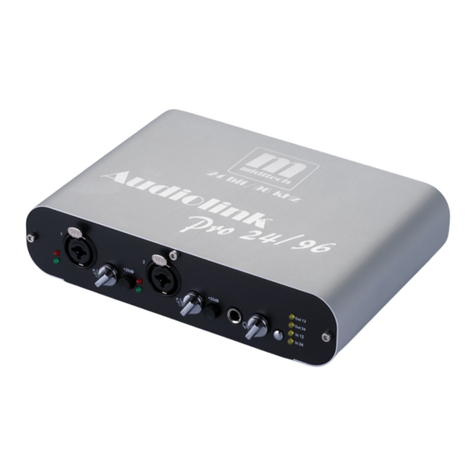
Miditech
Miditech Audiolink Pro 24/96 user manual
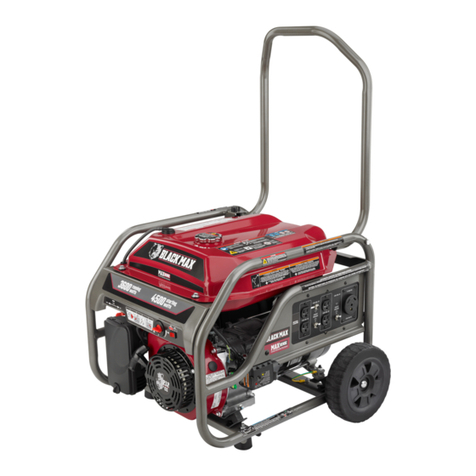
Black Max
Black Max BM903601 quick start guide
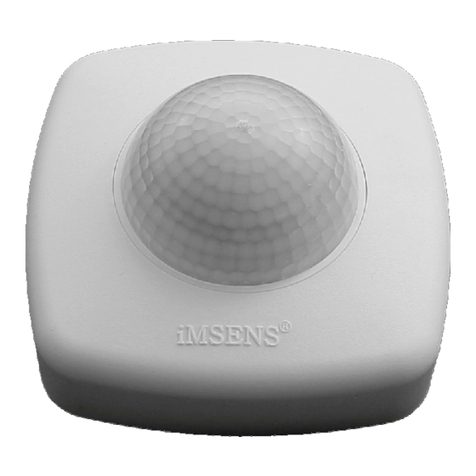
iMSENS
iMSENS iMS M4-3 360 Instructions for use
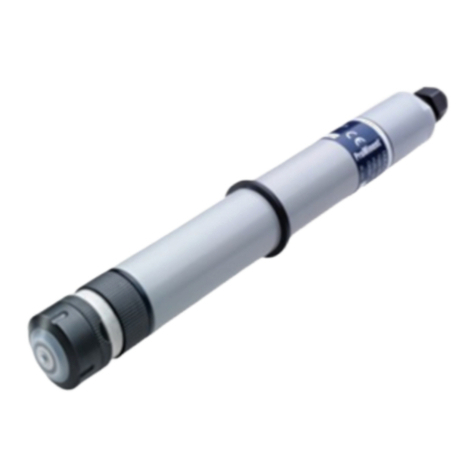
ProMinent
ProMinent DULCOTEST PER 1-mA-50 ppm operating instructions
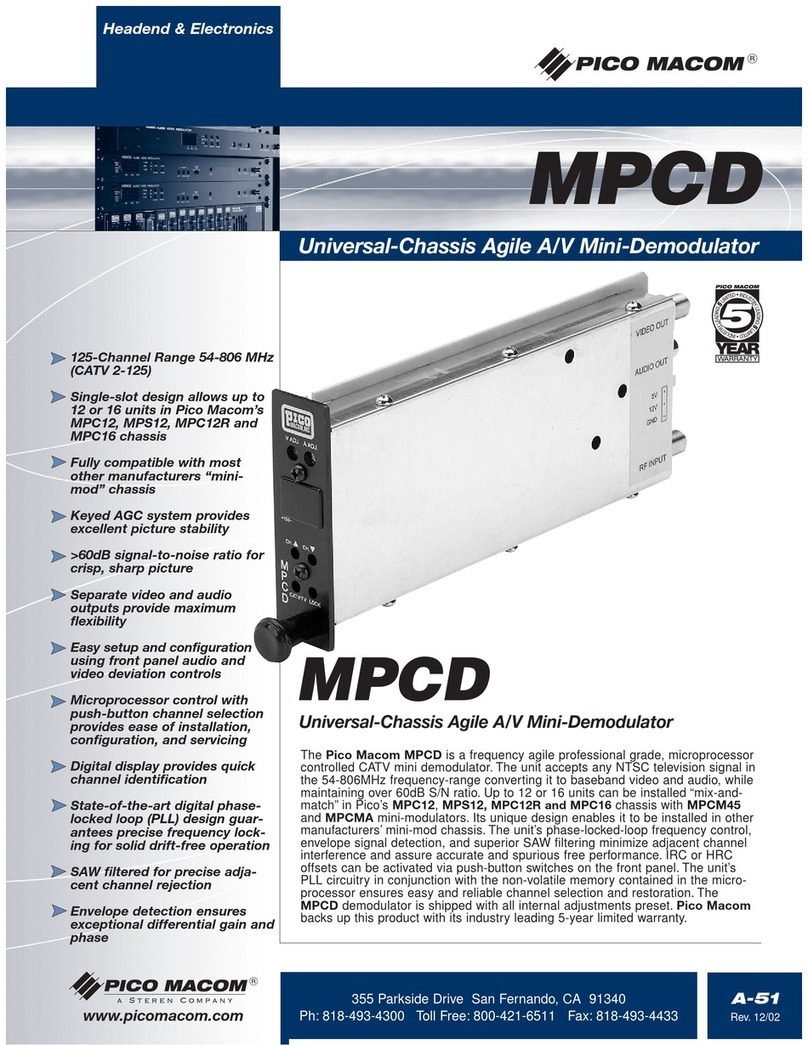
Pico Macom
Pico Macom MPCD Specifications
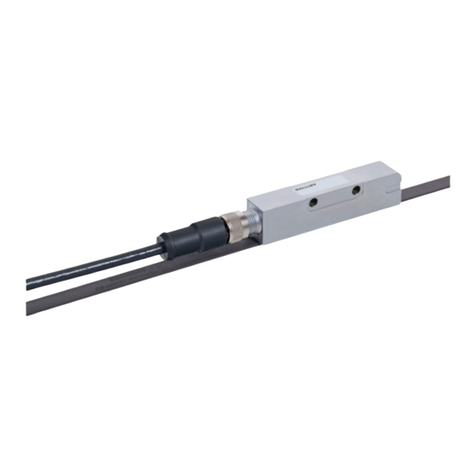
Balluff
Balluff BML-S1G0 7 M5E 0 Series Condensed guide

SICK
SICK SureSense HSE18 Series operating instructions

Lovibond
Lovibond DI 10 quick start guide
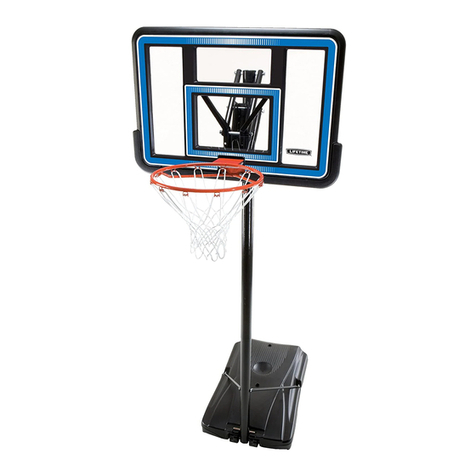
Lifetime
Lifetime QUICK ADJUST 90023 Assembly instructions
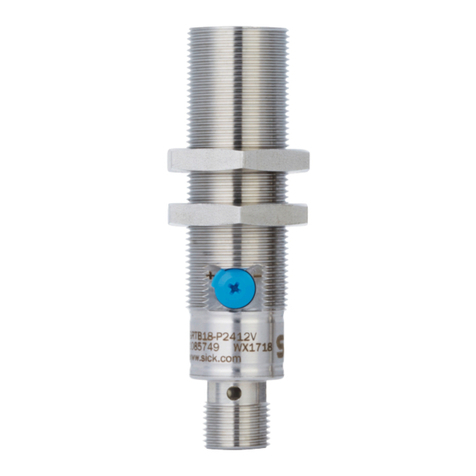
SICK
SICK GRTE18S V Series operating instructions
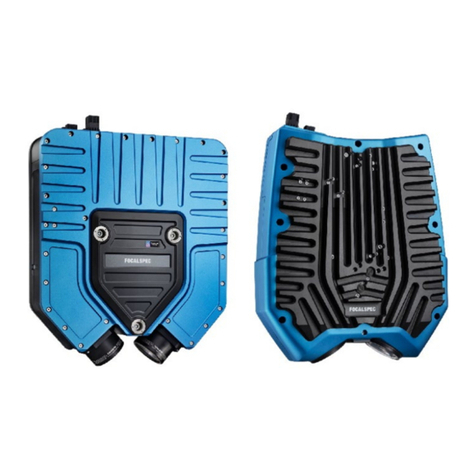
LMI Technologies
LMI Technologies LCI1220 user guide
